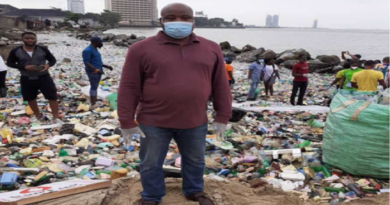Global temperature rise: UN warns of increase wildfires as California battles inferno
The United Nations Office for Disaster Risk Reduction (UNISDR) has warned that wildfires could become more frequent and more destructive as global temperatures rise and drought conditions plague many regions of the world.
“Last year was the hottest year on record and was above average for the number of reported major droughts and heatwaves. This year we are seeing a similar pattern with new temperature records being set on a monthly basis,†UNISDR chief Robert Glasser said recently in a news release issued by the Office.
He noted that a number of risk factors, such as lack of forest management, growth of urban areas in proximity to forests and human induced fires need to be addressed by disaster management authorities.
“The most frightening scenario is when major towns are threatened as we have seen this week in the case of Funchal and Marseille,†the senior UN official added.
According to UNISDR, firefighters on the Portuguese island of Madeira continue to battle wildfires that have reached Funchal, the island’s largest city, killing three people and destroying over 150 homes. The Government has also sought help to deal with nearly 200 fires on the mainland.
Similarly, Around 2,000 firefighters have been battling 8,000 acres of wildfires in the French region of Provence. More than 10,000 people have been evacuated from the Rhone river delta area which has been affected by drought, and there had been concerns that one of the blazes was close to Marseille which houses a number of petrochemical plants.
The fires are now reportedly under control but a high state of alert is being maintained.
Meanwhile, wildfires continue to wreak havoc in Spain. Some seven per cent of the La Palma island, part of the country’s Canary Islands was “devoured†by a wildfire and wildfires have also spread across 9,120 acres of land in the northern Spanish region of Galicia, reported UNISDR.
Additionally, UNISDR said that the Soberanes fire in northern California, near the Big Sur region, is now 50 per cent contained after growing to more than 67,000 acres. Some 4,800 firefighters have been deployed but 57 homes have been destroyed.
The wildfire in the United States was caused by an illegal unattended campfire, added the press release.
UNISDR also said that according to its Global Assessment Report, published in 2013, wildfires have a devastating impact on natural capital that has not be adequately accounted for, noting “Fires affect numerous ecosystem services including carbon storage, support to biodiversity, protection of water sources, reduction of soil erosion and land degradation and climate regulation.â€
It stated that such fires may be leading to a loss of ecosystem services in the range of $146 to $191 billion per year.
Meanwhile, Firefighters are battling a 3,000-acre wildfire in Northern California that destroyed at least 175 buildings and forced about 1,400 residents to flee their lake community, authorities said Monday.
The fast-moving Clayton fire broke out late Saturday afternoon off Highway 29 and Clayton Creek Road, forcing the entire community of Lower Lake — located more than 100 miles north of San Francisco — to evacuate, officials said.
Bulldozer operators spent much of Sunday night and Monday morning carving extra wide fire lines along the eastern border of Clearlake in effort to contain the blaze.
Extreme heat combined with the dry brush enabled the fire to grow overnight, burning about 1,400 acres and destroying four homes, according to Daniel Berlant, a spokesman for the California Department of Forestry and Fire Protection.
The fire doubled in size Sunday as it reached Main Street in Lower Lake and burned the post office, a winery, a Habitat for Humanity office and several other businesses, according to the Associated Press. Sixteen patients at a hospital in neighboring Clearlake had to be transferred to another facility 25 miles away.
“You can’t imagine what took place,†Cal Fire spokesman Scott McLean said Sunday evening. “There was extreme fire behavior and winds that pushed it across the road into structure after structure after structure. We had airplanes dropping retardant, helicopters dropping thousands of gallons of water — trying to get ahead of this.â€
McLean said it was impossible to know how many homes and businesses were lost. Fire officials said they would have a better idea of the damage Monday and would offer an update before the afternoon.



